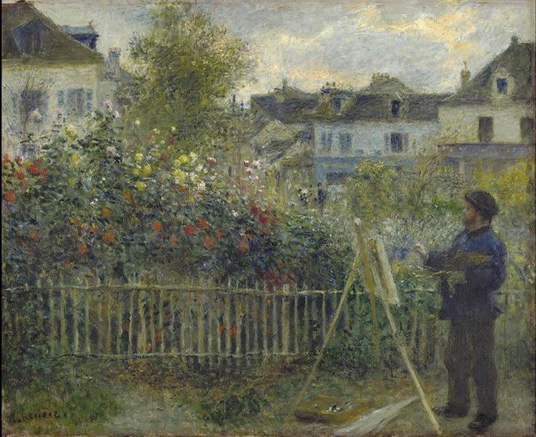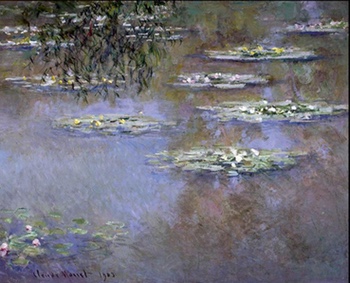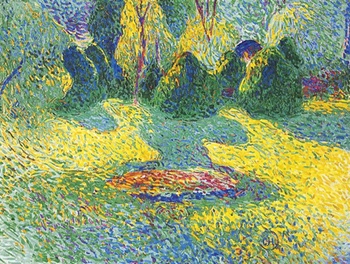
There is an exhibit in Cleveland right now that you have to see. The Royal Academy of London and the Cleveland Museum of Art have created Painting the Modern Garden: Monet to Matisse. You can see it right here in Cleveland or you can go to London when it’s there. The exhibit is available to you through Tue 1/5/16.
I had a 2:00pm lecture ticket and a 3:30pm exhibit ticket for opening day, Sun 10/15 — you HAVE to have a ticket because the exhibit has been so anticipated — and I didn’t have enough time to fully immerse myself in it. The exhibit is meant to be taken in, meditated upon and experienced on a visceral level. This exhibit is not about masterpieces, but it’s full of masterpieces. It’s about how artists use gardens to produce some of their best work, about the symbiotic relationship between floral displays and its representation on canvas. Did you know many artists in the late 19th and early 20th centuries planted gardens just so they could paint gardens at home?

The 10/11 introductory lecture was given by Eric T. Haskell, professor of French and humanities director of the Clark Humanities Museum at Scripps College in Claremont, California, whose grandfather, Leonard C. Hanna Jr., left $34 million to the museum in 1958, making the CMA one of the best-endowed museums in the country. Haskell’s studies in literature, history, art, architecture and the history of ideas, and France made him the perfect choice to talk about Claude Monet as artist and gardener. He was entertaining and informative.
Haskell explained how Monet rose early every day to show his gardener what he wanted to paint and to make arrangements to lower him into trenches or raise him up on platforms. During the lecture, we saw many images of the artist in his garden, which demonstrated the artist’s passion for his garden at Giverny, where he lived for much of his career.
After Haskell’s lecture, it was easy to forget the exhibit was not just about Monet and his gardens. Art of his contemporaries from Europe and the U.S. show the influence of Monet, the most famous artist of the time. Many of them visited Monet at Giverny, but we are left with the impression that gardens were much coveted at the time and the artists would have turned to them as subjects on their own. Visitors can witness impressionist, post-impressionist and avant-garde work of Renoir, Cezanne, Van Gogh, Sargent, and Kaminsky, among others, in their own gardens, in Monet’s gardens and in public gardens.
One can follow Monet’s transformation from careful impressionist to abstract painter by watching the progression of the Japanese bridge that became red-hued and ornery as the artist became older and his eyesight failed him. Monet the impressionist moved the art world right into modern art.

The big moment for anyone who is aware of the vastness of the triptych panels of “Water Lilies” (Agapanthus), c.1915-1926, owned by the CMA and the art museums in Kansas City and St. Louis, is seeing them reunited in this exhibit, possibly for the first time since the left the artist’s studio long after his death. It was a fantastic moment to see a wall completely filled with the predominantly watery blue work by a great artist, especially knowing how hard it was for the master to create such huge paintings as an elderly man.
Beautiful. Get to the Cleveland Museum of Art before by January 5 to see how artists a hundred or more years ago created art from viewing the natural world. Tickets are $18 for adults, $16 for students, and $9 for children, 5 and under free. You’ll want to go back again.
Cool Cleveland contributor Claudia Taller likes to look at art AND create it. She suggests the Cleveland Museum of Art as a venue for adult studio art classes — check out the offerings.
clevelandart.org/painting-modern-garden-monet-matisse

Cleveland, OH 44106